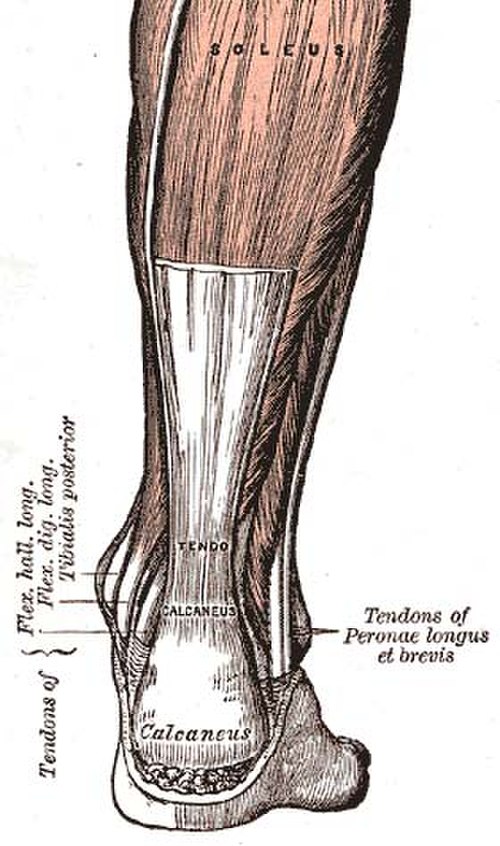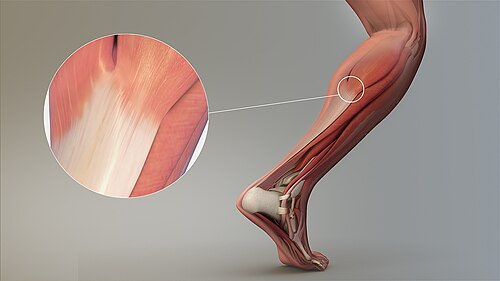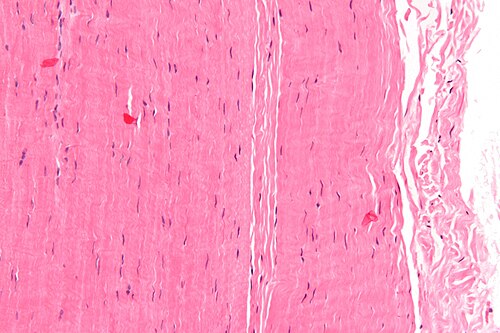Tendonnoun
(anatomy) A tough band of inelastic fibrous tissue that connects a muscle with its bony attachment.
Tendonnoun
(construction) A wire or bar used to strengthen prestressed concrete.
Tendonnoun
A tough insensible cord, bundle, or band of fibrous connective tissue uniting a muscle with some other part; a sinew.
Tendonnoun
a cord or band of inelastic tissue connecting a muscle with its bony attachment
Tendon
A tendon or sinew is a tough high-tensile-strength band of dense fibrous connective tissue that connects muscle to bone and is capable of withstanding tension and transmit the mechanical forces of muscle contraction to the skeletal system. Tendons are similar to ligaments; both are made of collagen.
Aponeurosisnoun
(anatomy) A flattened fibrous membrane, similar to a tendon, that binds muscles together or connects them to other body parts like skin or bone.
Aponeurosisnoun
Any one of the thicker and denser of the deep fasciæ which cover, invest, and the terminations and attachments of, many muscles. They often differ from tendons only in being flat and thin. See Fascia.
Aponeurosisnoun
any of the deeper and thicker fascia that attach muscles to bones; resemble flattened tendons
Aponeurosis
An aponeurosis (; plural: aponeuroses) is a type or a variant of the deep fascia, in the form of a sheet of pearly-white fibrous tissue that attaches sheet-like muscles needing a wide area of attachment. Their primary function is to join muscles and the body parts they act upon, whether it be bone or other muscles.







